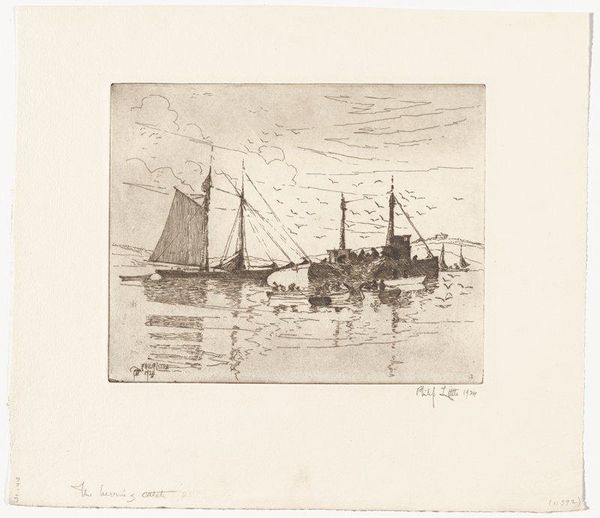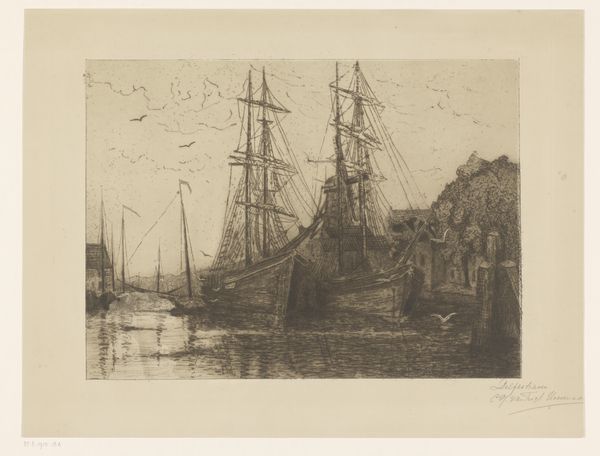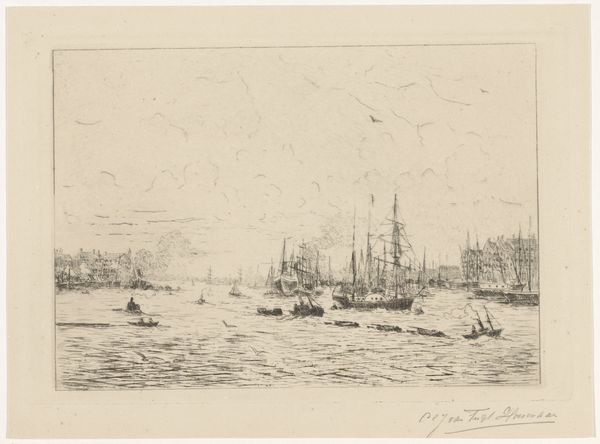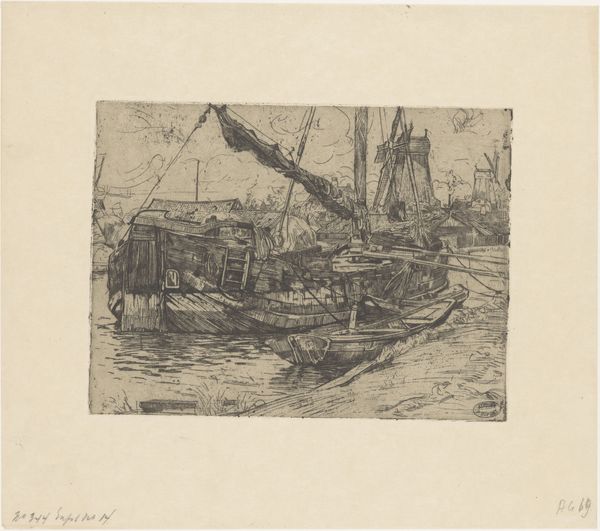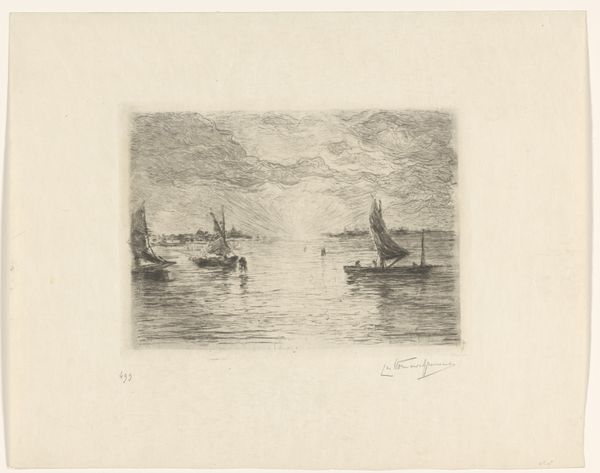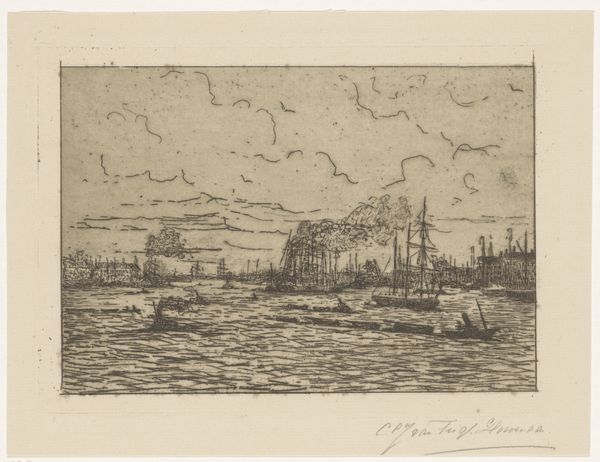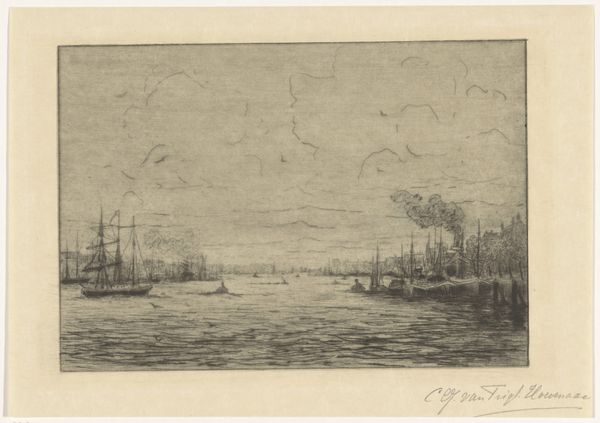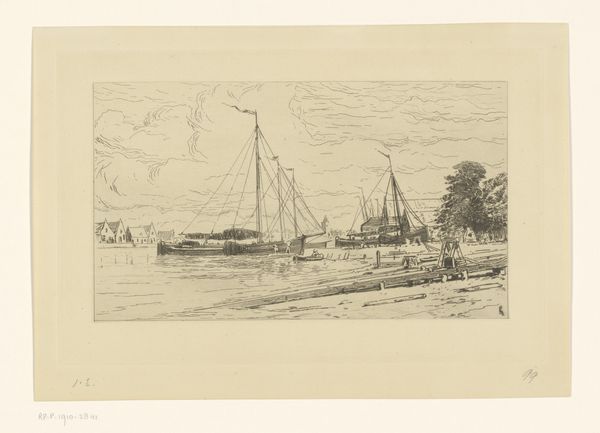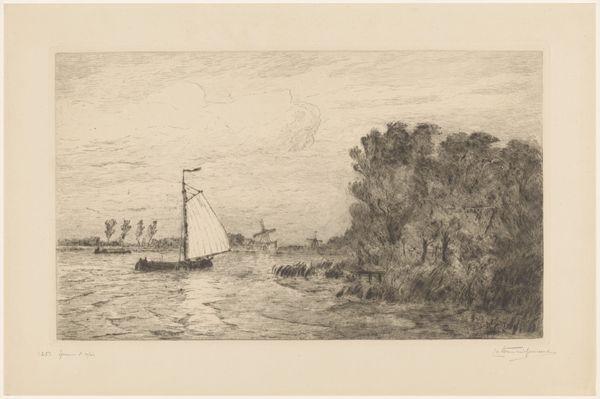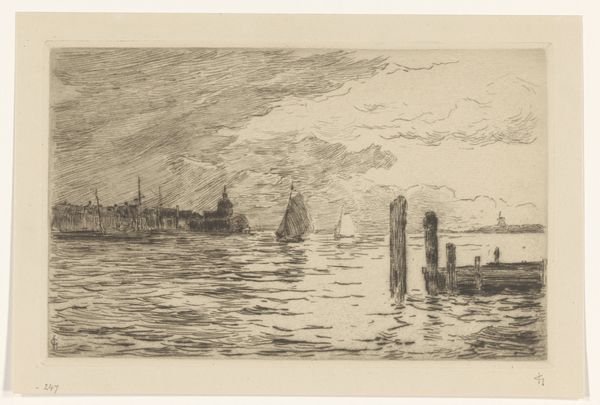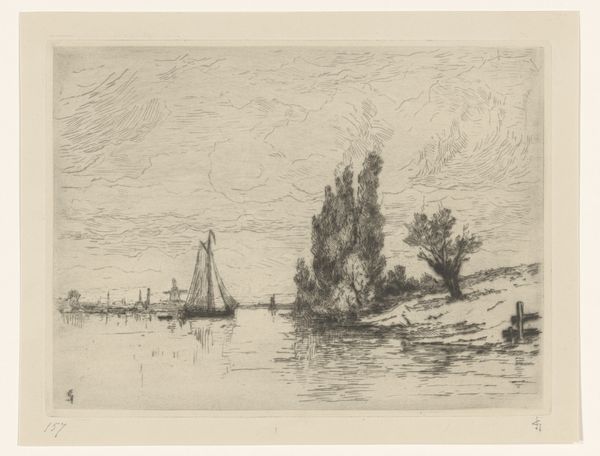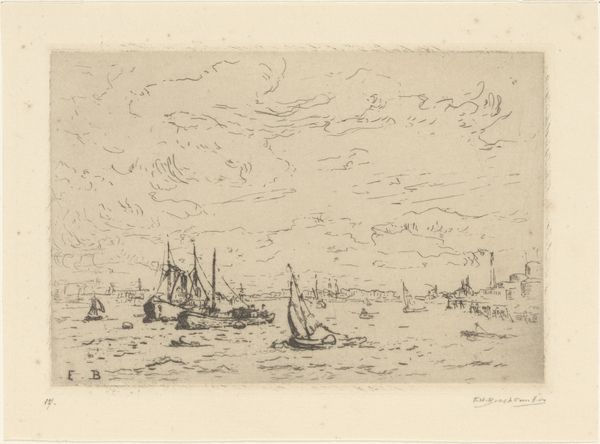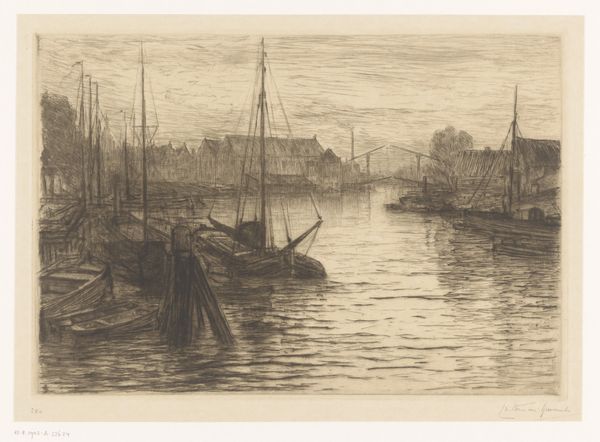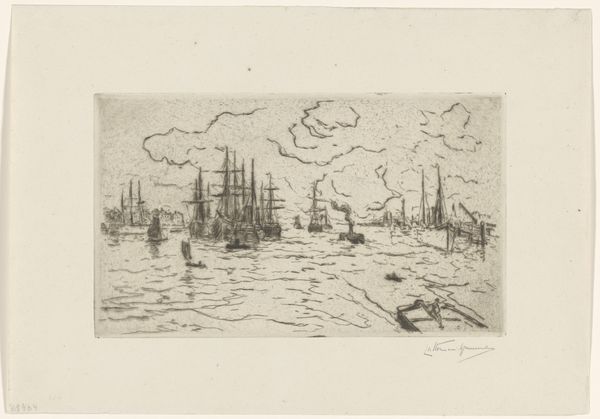
Riviergezicht met drie stoomboten 1864 - 1909
0:00
0:00
#
landscape illustration sketch
#
ink drawing
#
pen drawing
#
pen sketch
#
old engraving style
#
river
#
etching
#
ink drawing experimentation
#
pen-ink sketch
#
pen work
#
sketchbook drawing
Dimensions: height 170 mm, width 218 mm
Copyright: Rijks Museum: Open Domain
Curator: This is Cornelia Christina Johanna van Trigt-Hoevenaar's "River View with Three Steamers," created sometime between 1864 and 1909. Editor: Immediately, I’m struck by how effectively the artist captures the atmosphere with such minimal means. The lines seem almost frantic in places, particularly in depicting the steam. Curator: Absolutely, the medium used seems to be pen and ink on paper. And look at the density of marks versus the relative emptiness of other areas of the composition. We can read this etching as a direct response to the burgeoning industrial revolution. It presents, as its primary subject, novel machines within the familiar context of river transport. Editor: Yes, the prominence of those steamships, dominating the composition, emphasizes how industrial innovation was changing trade and labour. What role did institutions play in fostering artists like van Trigt-Hoevenaar at this time? Curator: Female artists at this period often received training through private studios, or were connected to artistic networks by family members. Consider how, at the time, academies largely excluded women, or restricted their participation. We can see how this artist was impacted by a societal infrastructure that influenced the availability of subject matter and methods that fell under the female purview. Editor: Exactly. And her choice of depicting working ships on a waterway reveals an interest in everyday industry, something arguably connected to the labor and resource-centric ethos. Were similar subjects explored by male artists viewed as grander artistic statements due to socio-economic biases of that moment? Curator: Very likely, or as reflections of the societal value placed on each artist's respective access to labor and production. In short, societal forces would impact critical and institutional interpretations, assigning differing degrees of social impact and complexity depending on the maker's gender. Editor: Thinking about it that way highlights the nuances we might overlook otherwise. It emphasizes that it is important to see this not just as a pretty scene. Curator: Precisely. Thinking about the conditions of production, we gain access to different, nuanced ways of seeing art. Editor: It all emphasizes how context shapes everything, even something as apparently simple as an ink drawing of ships on a river.
Comments
No comments
Be the first to comment and join the conversation on the ultimate creative platform.
